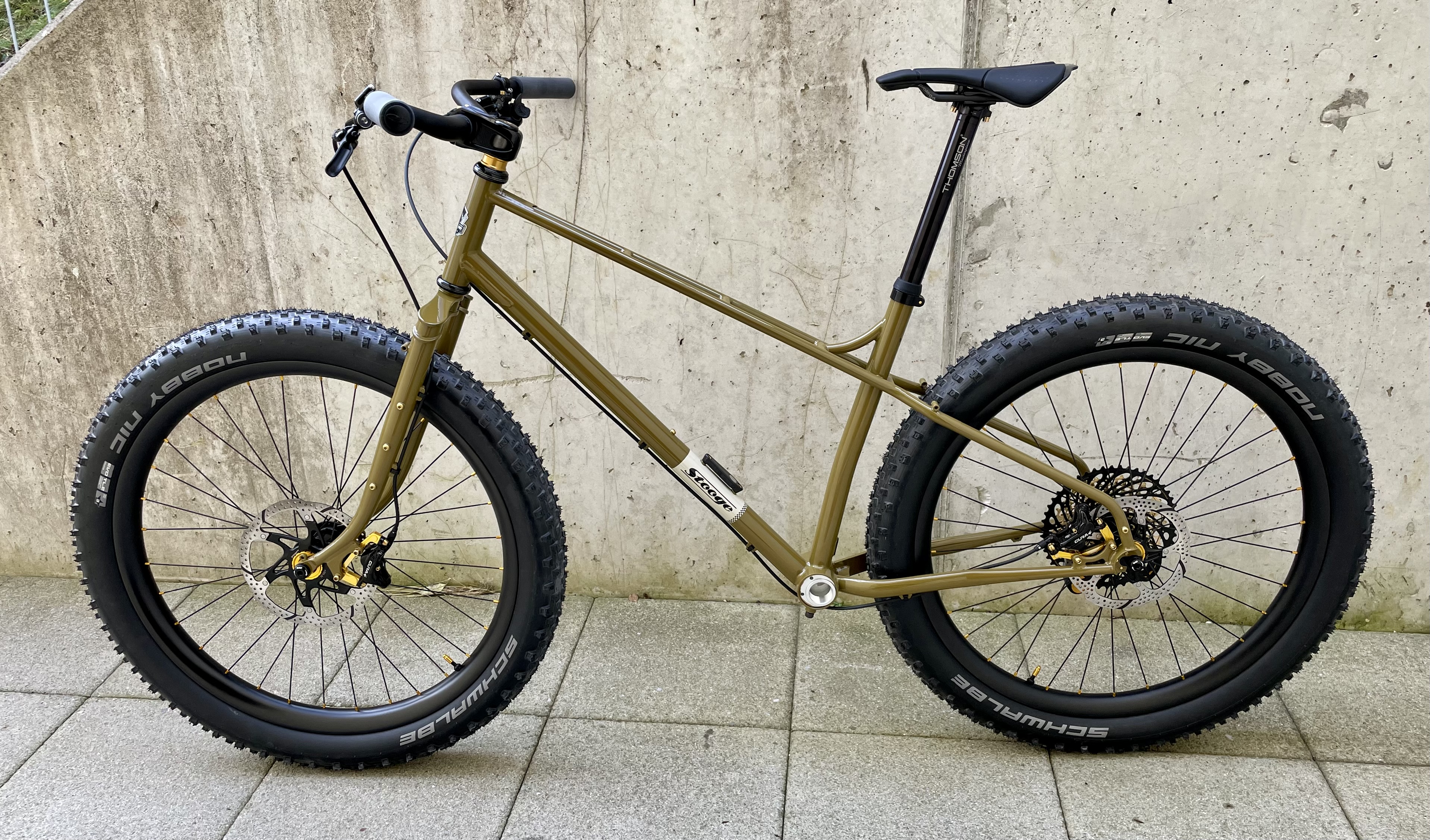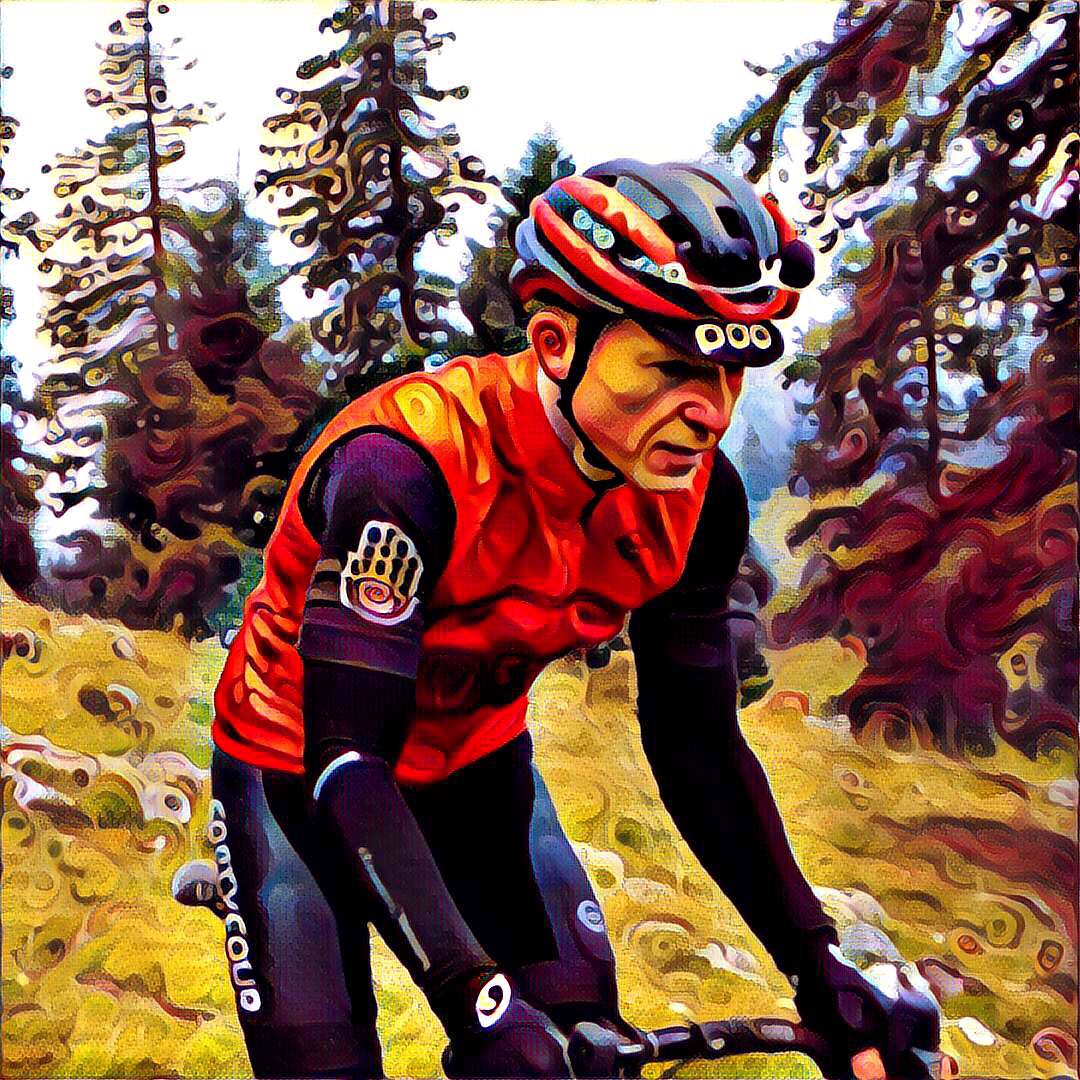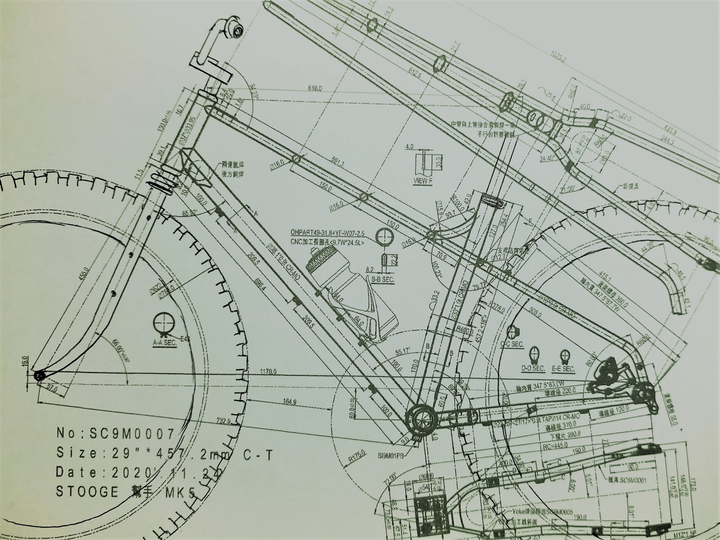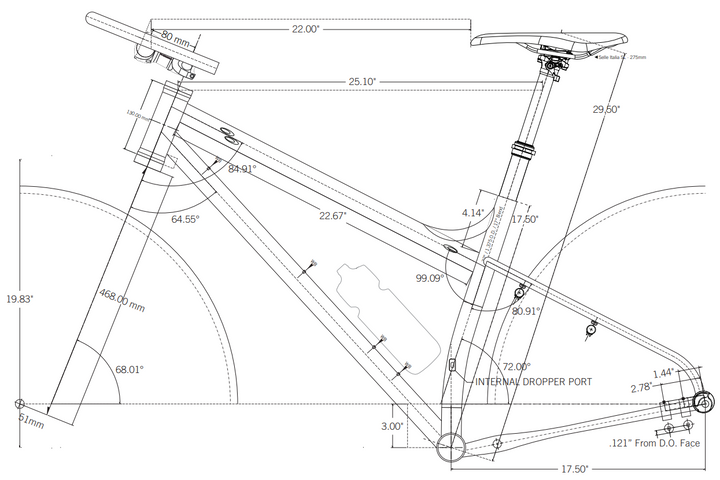MK5 Geometry

The numbers below are from Bike Insights, from Stooge and from Kris' drawings I imported into QCAD, an open-source 2D CAD system. While some people totally geek out about bike geometry and could hold a 2-hour monologue on head tube angles alone, I'm really not a numbers expert when it comes to cycling. Whether the topic is frame geometry or watts and whatnot, I'm not the expert to talk to despite 36 years of cycling. I don't sit on enough bikes to have an expert opinion on what a slacker head tube or longer trail do to a bike. Sure, I have an idea about it, but with the rather small number of bikes I've ridden over the years, I'm still far from having earned the degree of "armchair geometry wizard." The 36 years in the sport have given me the ability to know what works for me; no more, no less. Changes I've made over the years happened gradually. Being limited to riding only the bikes I purchased, my experience and knowledge of the sport are fairly narrow. I know nothing about suspension and bikes equipped with it. I know even less about bikes powered by motors and honestly don't care to know anything about them. When the time comes to look for a new bike, and it's not made to measure by a bike builder, I usually compare the geometry to the bikes I already own. Often, I draw the frames up in CAD and overlay them for comparison. This also helps to figure out what stem to select to achieve a similar position on a new bike.
In the end, no single number will dictate how a bike rides. Heck, not even all the numbers in the table below say much about how the Stooge MK5 ultimately rides. The equipment chosen, the tires selected, the pressure they're inflated to, and most notably missing in a simple two-dimensional representation of a bike are handlebar width and shape. Where one's hands are positioned, in which angle they rest on the bar, how low or how high they grab the bar, all that dramatically influences how a bike feels.
| Bike Geometry | MK5 | Marauder | Snakedriver |
|---|---|---|---|
| Stack | 640 mm | 615 mm | 625 mm |
| Reach | 435 mm | 444 mm | 477 mm |
| Stack to Reach Ratio | 1.47:1 | 1.39:1 | 1.31:1 |
| Saddle to Grip (Back to Center) | 835 mm | 860 mm | 820 mm |
| Seat Tube Length (CT) | 457 mm | 419 mm | 445 mm |
| Top Tube Length (Effective) | 610 mm | 606 mm | 638 mm |
| Top Tube Slope | 19.7° | 22.2° | 27.1° |
| Head Tube Angle | 66° | 70° | 68° |
| Seat Tube Angle (Virtual) | 73.5° | 72.9° | 75.1° |
| Seat Tube Angle (Actual) | 72° | 72° | 72° |
| Head Tube Length | 150 mm | 115 mm | 130 mm |
| Bottom Bracket Drop | 60 mm | 57 mm | 76 mm |
| Bottom Bracket Height | 308 mm | 318 mm | 309 mm |
| Chainstay Length (Horizontal) | 445 mm | 415 mm | 445 mm |
| Front-Center | 733 mm | 704 mm | 758 mm |
| Front-Center (Horizontal) | 725 mm | 696 mm | 754 mm |
| Wheelbase | 1'170 mm | 1'111 mm | 1'199 mm |
| Fork Rake | 57 mm | 51 mm | 51 mm |
| Fork Length | 455 mm | 483 mm | 468 mm |
| Trail | 101.5 mm | 82.2 mm | 100.5 mm |
| Mechanical Trail | 92.8 mm | 77.3 mm | 93.2 mm |
| Wheel Flop | 37.7 mm | 26 mm | 35 mm |
| Tire to Pedal Axle Distance | 189.7 mm | 153.5 mm | 198.2 mm |
| Pedal Axle to Ground Clearance | 133.2 mm | 143.1 mm | 134.0 mm |
| Wheel Size | 27.5" | 29" | 27.5" |
| Tire Width | 3" | 2.4" | 4.5" |
| Tire Outer Diameter | 736.4 mm | 750.0 mm | 770.0 mm |
| Bike Length with Tires | 1'906.4 mm | 1'861.0 mm | 1'968.9 mm |
Looking at the stack and reach numbers of the MK5, it has the shortest reach and tallest stack. If all else were equal, it would mean it has the most upright position of the three. With the by far longest head tube, the tall stack isn't surprising. One could think that the Snakedriver has the most stretched out and aggressive position based on the huge reach figure, but equipped with a Jones H-bar that's not the case. The 9 mm reach difference between MK5 and Marauder was the reason I opted for a 50 mm stem for the MK5 versus a 40 mm stem on the Marauder. It's interesting to point out that the MK5 has a shorter reach yet has a slightly longer top tube than the Marauder.
One measurement I use, and one which you won't find in any manufacturer's geometry chart, is the distance from the saddle nose to the center of my palm when holding the handlebar. On the MK5 I have a short-nosed Prologo Scratch M5 Nack saddle, so in that case, I compare not the distance from the nose but from the back of the saddle (saddle to grip in the table above). There are three points your body contacts the bike after all. Your feet stand on the pedals, your butt sits on the saddle, and your hands grab the handlebar. As already hinted before, although the Snakedriver has the longest reach, it has the shortest saddle-to-grip distance. The Marauder, the only bike with a setback seat post, is the longest. The Stooge is slightly longer than the Snakedriver, which should be good. Both bikes are geared, and I'm pedaling more in the saddle when I have 12 cogs I can shift into. The stretched position on the Marauder is ideal because it's mostly ridden out of the saddle being a single-speed.
Let's move on to the head tube angles, where the Marauder has an almost old-schoolishly steep 70°. It doesn't hinder me, though, to have fun on that bike. The Snakedriver with 68° would nowadays also be considered steep. Angles have slackened quite a bit these past couple of years. The MK5 sports the slackest head tube angle with 66°. If I discover that this suits me well, the next fat-bike in a couple of years may well be designed like that as well.
Let's jump a few rows down to the fork figures. Here, the MK5 stands out with the most rake (or fork offset) and the longest trail. It'll be interesting to discover the steering characteristics of the bike. The common belief has always been that more trail makes a bike more stable. And on the other end, less trail, less stability, and as a result, more agility. Jan Heine recently experimented with two bikes and noticed that the number to look at isn't trail, but wheel flop. He called wheel flop "power steering." The more you have on a bike, the easier it is to turn it. The MK5 happens to have the most wheel flop. Such "power steering" is obviously good on technical terrain downhill. Will it be too much "power steering" to keep the bike in a straight line while climbing?
Let's jump back up a few rows and look at the bottom bracket. Here the Marauder has the most ground clearance. The Snakedriver, which has the largest wheels, has the bottom bracket as low as the MK5. I had it designed that way. When I approached Kris to build my second fat bike, I asked him for a snow-specific geometry. It wasn't meant to be a general-purpose fat bike, and that's why we put the bottom bracket low, as you want to be as low as possible in soft snow. The BB of the MK5 is surprisingly low, too. This probably has to do with the fact, that Andy designed the bike for both 27.5" and 29" wheels. Since I'm using the smaller wheels the BB drops closer to the ground.
Lastly, I'm ending this analysis with a look at lengths. The Marauder is the shortest bike overall, front-center, as well as in the back. The Snakedriver is unsurprisingly the longest of the three. Again, the thinking was length provides stability, and directional stability is what you want in snow or sand. The MK5 is on the long side as well.





Comments